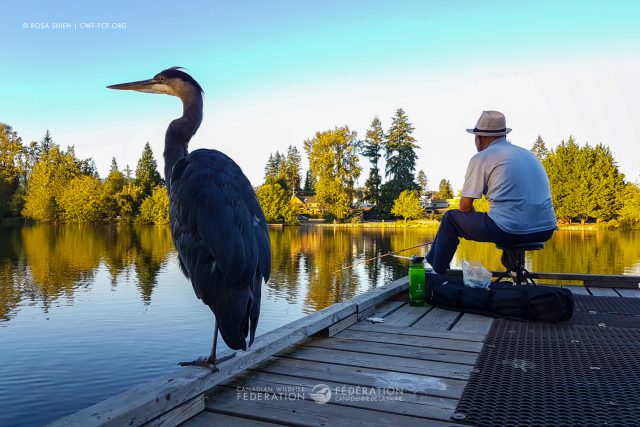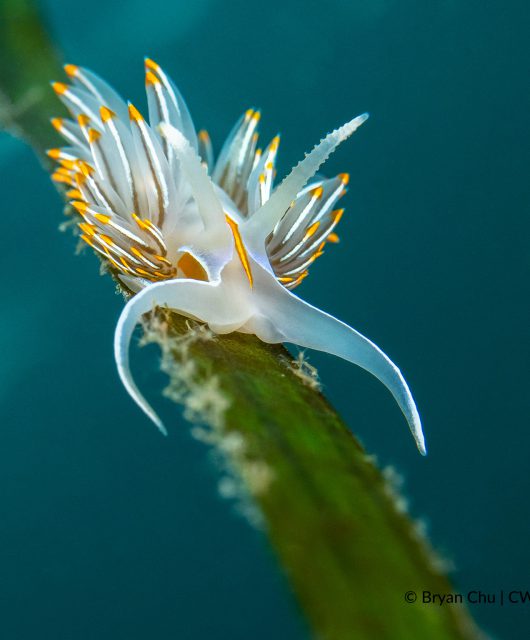Canada is home to some incredible wildlife, but few species are as striking as the Great Blue Heron.
If you’ve ever spotted one silently stalking the shoreline or taking flight with its six-foot wingspan, you know how special these birds are.
The Great Blue Heron is the largest heron species in North America and a familiar sight in wetlands, lakes, riverbanks and marine coastal environments across Canada. These birds have few predators in aquatic ecosystems, and studies have shown they may help contribute to a healthier fish population by eating mostly sick, deceased fish near the surface of the water.
Fun fact! Great Blue Herons have a special modified sixth vertebrae which allows them to curl their neck and quickly strike at prey and swallow it whole!
There are estimated to be over 100,000 breeding Great Blue Herons in Canada, according to the North American Breeding Bird Survey. While they’re not currently considered endangered, some regional populations are more vulnerable than others, particularly where shoreline development, pollution and habitat loss come into play.
If you’re lucky enough to own a lakefront property, you can play a part in helping them thrive. Here’s everything you need to know to turn your shoreline into a heron haven.
1. Give Them a Place to Rest

Location: Coquitlam, BC
“Como Lake residents love wild birds and ducks. A blue heron was accidentally flying here and perched down. When people are fishing, it is always accompanied. [The heron] becomes the residents’ friends.”
- Keep shoreline vegetation intact. Think natural shrubs, reeds, and trees along the water’s edge offer important cover.
- Avoid clearing or manicuring your shoreline. A “clean” lawn may be appealing to humans but it’s uninviting to wildlife.
- Install a heron-friendly dock like a floating dock or one with natural edges which give herons a place to rest.
2. Give Them Something to Eat

Herons are patient hunters, feed on fish, frogs, insects, and small mammals.
- Maintain natural shorelines. Shallow waters with aquatic plants support the fish and amphibians’ herons eat.
- Avoid using pesticides or herbicides. Chemicals can kill off the insects and amphibians that make up a heron’s diet and can run off into the water and further cause devasting effects.
- Limit boat wake and disturbance. Too much activity can scare away both prey and herons.
3. Give Them a Place to Nest

Great Blue Herons nest in colonies, often high in trees near water, known as rookeries.
- Protect mature trees near the shoreline. These are prime nesting sites.
- Leave dead standing trees if safe to do so. Known as snags, dead trees are a primary choice for Herons to nest in.
- Avoid disturbing known heron colonies during breeding season (between March and July). Even brief human activity can cause birds to abandon their nests.
4. What Not to Do

Some common cottage practices can unintentionally harm herons or discourage them from settling nearby:
- Don’t remove fallen logs or dead trees near water. These provide excellent perching and hunting spots.
- Don’t feed herons. They need to rely on natural food sources to stay healthy and avoid becoming habituated to people.
- Don’t let pets roam unsupervised near nesting areas.
5. Love Your Lake

A healthy lake starts with a healthy shoreline. Love Your Lake is a shoreline evaluation program designed to encourage lakefront property owners to take proactive steps toward improving lake health by creating and maintaining healthier shorelines.
Here are resources to get you started:
- Shoreline property resources: http://loveyourlake.ca/shoreline-property-resources/
- Shoreline self-assessment: https://loveyourlake.ca/self-assessment/
By making your lakefront property a little more wildlife-friendly, you’re contributing to a healthier ecosystem and helping ensure that these beautiful birds and other wildlife continue to grace Canadian shorelines for generations to come.



